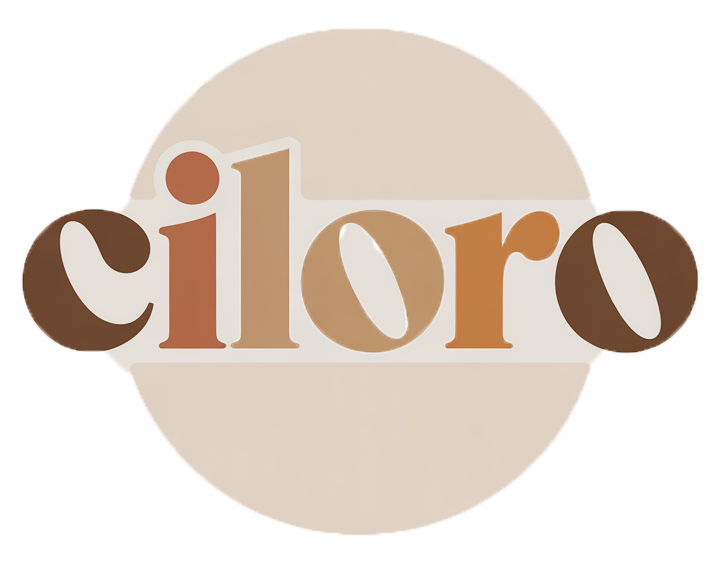Gothic Decor Ideas to Transform Your Living Space
Gothic decor is a captivating style that evokes a sense of mystery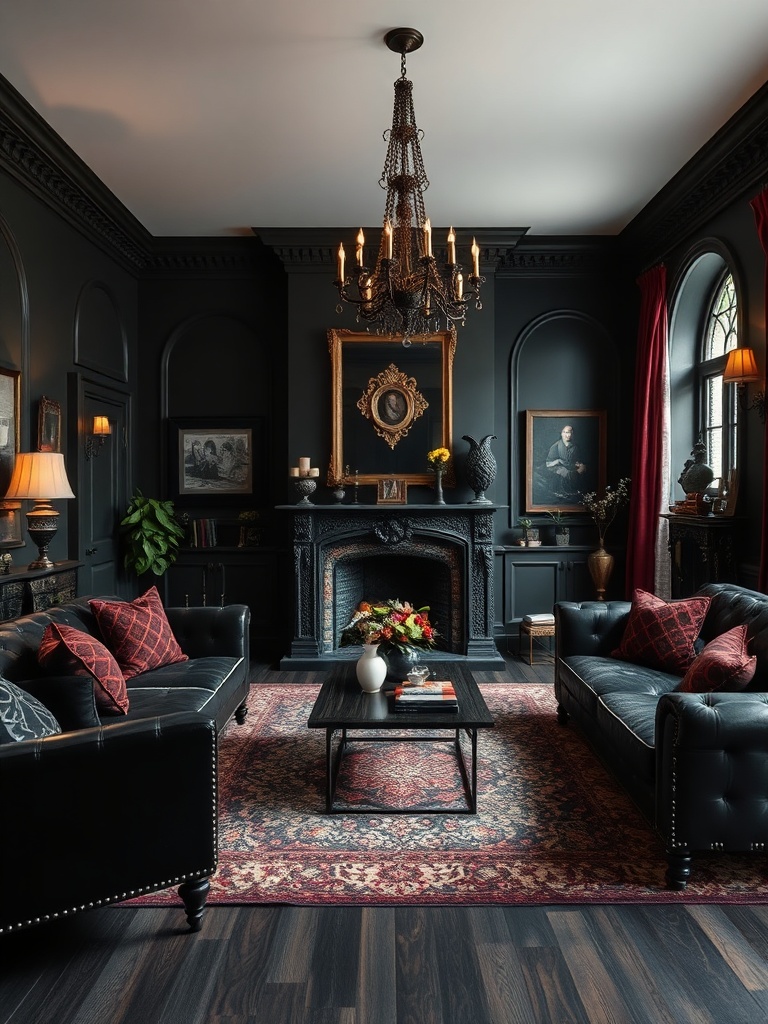
, drama, and elegance. Its rich history and unique aesthetic appeal make it a popular choice for those looking to transform their living spaces into something extraordinary. By incorporating elements of Gothic design, individuals can create an environment that reflects their personal tastes while also showcasing a deep appreciation for artistry and history.
Personalizing living spaces is essential for making a house feel like a home. Gothic decor offers a variety of ways to achieve this, from color choices and furniture selections to artwork and accessories. In this article, we will explore seven unique ideas that can help you embrace the Gothic style and elevate your living space.
Understanding Gothic Decor
What is Gothic Decor?
Gothic decor is characterized by its dramatic flair, intricate details, and dark color palettes. This style has its roots in the Gothic architecture of the Middle Ages, which featured pointed arches, ribbed vaults, and flying buttresses. Over time, the aesthetic expanded to include various decorative arts, influencing everything from furniture design to textiles.
Historically, Gothic decor emerged as a response to the lighter, more delicate styles of the Renaissance. It emphasizes a sense of mystery and romance, often drawing inspiration from nature, mythology, and the supernatural. The evolution of Gothic decor has seen it transform from a historical style into a modern movement embraced by many.
Key Elements of Gothic Design
- Color Palette: Gothic decor typically features dark hues such as deep reds, blacks, and jewel tones like emerald green and sapphire blue.
- Materials: Common materials include wood, metal, and glass, often with intricate detailing.
- Textures: Rich textures such as velvet, lace, and stone add depth and warmth to the space.
Idea 1: Dark and Dramatic Color Schemes
Choosing the Right Colors
To achieve a true Gothic vibe, it is important to select the right colors. Recommended shades include:
- Deep burgundy
- Midnight blue
- Forest green
- Charcoal gray
Combining these colors effectively can create a harmonious and inviting atmosphere. Pairing dark shades with lighter accents can help to balance the space while maintaining the Gothic aesthetic.
Accent Walls
Creating an accent wall can dramatically enhance the Gothic feel of a room. Consider the following techniques:
- Use bold patterns such as damask or intricate murals to create a focal point.
- Incorporate textured wallpaper or paint techniques to add depth.
Accent walls can serve as a backdrop for key furniture pieces or artwork, drawing the eye and adding character.
Idea 2: Antique and Vintage Furniture
Sourcing Antique Pieces
Finding authentic Gothic furniture can be a rewarding endeavor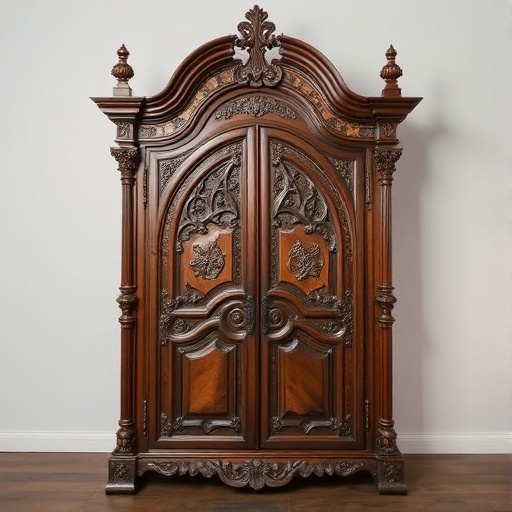
. Here are some tips for sourcing:
- Visit antique shops, flea markets, and estate sales for unique finds.
- Consider online marketplaces specializing in vintage items.
Upcycling vintage pieces can also be an excellent way to incorporate Gothic elements into your decor.
Key Furniture Types
Statement pieces play a crucial role in Gothic decor. Important furniture types include:
- Armoires with intricate carvings
- Chaise lounges with rich upholstery
Incorporating Gothic-inspired designs—such as pointed arches and ornate details—will enhance the overall aesthetic.
Idea 3: Statement Lighting Fixtures
Types of Gothic Lighting
Lighting is essential in setting the mood for a Gothic-inspired space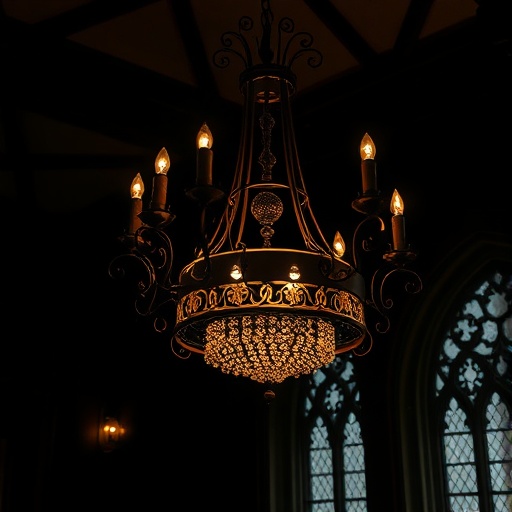
. Consider these types:
- Chandeliers made from wrought iron
- Candelabras for a romantic ambiance
- Lanterns with glass accents
Choosing the right materials, such as iron and glass, can further enhance the Gothic vibe.
Placement and Ambiance
For maximum effect, consider where to place your lighting fixtures. Here are some tips:
- Hang chandeliers in dining areas or entryways to create a dramatic entrance.
- Use candelabras on tables or mantels to evoke a sense of warmth and intimacy.
Creating a moody atmosphere with lighting can transform your living space into a Gothic sanctuary.
Idea 4: Gothic Artwork and Wall Decor
Selecting the Right Artwork
Artwork is a vital component of Gothic decor
. Consider these types of Gothic art:
- Dark landscapes that evoke mystery
- Mythical creatures that spark intrigue
Incorporating mirrors and ornate frames can also enhance the Gothic aesthetic.
Display Techniques
Arranging art in a cohesive way is key to a well-decorated space. Here are some techniques:
- Group smaller pieces together for a gallery wall effect.
- Use shelves and wall-mounted displays to create visual interest.
Thoughtful display techniques can elevate the overall Gothic theme in your home.
Idea 5: Textiles and Fabrics
Choosing Gothic-Inspired Textiles
Selecting the right fabrics is essential for achieving a Gothic look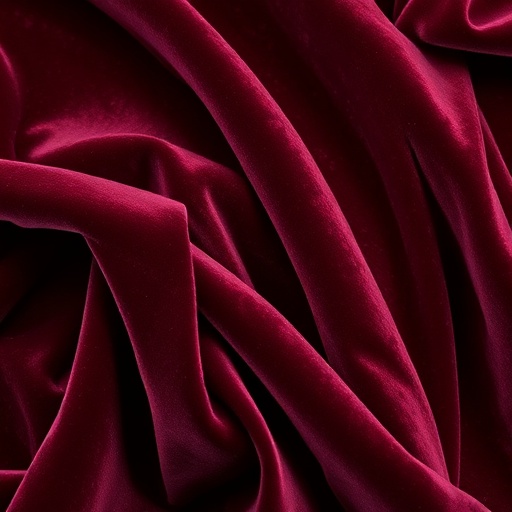
. Recommended textiles include:
- Velvet for its luxurious feel
- Brocade with intricate patterns
Patterns that enhance the Gothic aesthetic, such as damask or paisley, can add depth to your decor.
Layering Textiles
Layering textiles is an effective way to create visual interest and comfort. Consider these tips:
- Incorporate cushions and throws in various textures.
- Use heavy curtains to frame windows and add drama.
Layering helps to create a cozy yet sophisticated atmosphere in your living space.
Idea 6: Gothic-Inspired Accessories
Decorative Accents
Accessories can add personality to your Gothic decor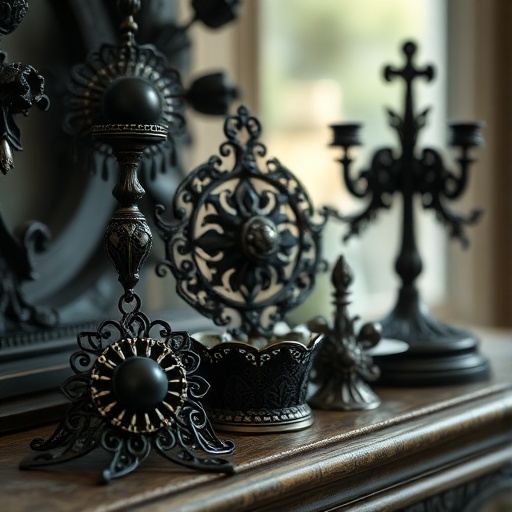
. Consider incorporating:
- Skulls, ravens, and other Gothic symbols for a unique touch.
- Candles and ornate candle holders to enhance the ambiance.
These elements can serve as conversation starters and focal points in your home.
Seasonal Decor
Adapting Gothic decor for different seasons can keep your space feeling fresh. Here are some ideas:
- Incorporate Halloween-themed accents during the fall.
- Use winter elements, such as evergreen wreaths, to maintain the Gothic essence.
Temporary changes can still reflect your Gothic style while celebrating the seasons.
Idea 7: Creating a Gothic Garden Space
Indoor Plants with a Gothic Twist
Choosing dark or unusual plants can enhance your Gothic decor indoors. Consider:
- Black roses for a striking focal point.
- Night-blooming flowers that add an air of mystery.
Plant care tips specific to these varieties can help maintain their beauty and health.
Outdoor Gothic Elements
Incorporating outdoor elements can create a secluded, mysterious garden area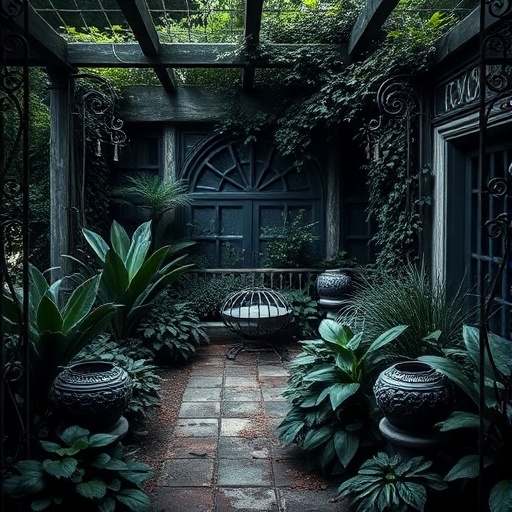
. Here are some ideas:
- Use statues and trellises to add visual interest.
- Incorporate wrought iron fencing or furniture for a cohesive look.
Creating an outdoor Gothic space can extend your unique style beyond the interior of your home.
Conclusion
In summary, embracing Gothic decor can transform your living space into a reflection of your personal style. From dark color schemes and antique furniture to statement lighting and unique accessories, the possibilities are endless. By incorporating these seven unique ideas, you can create a home that is both inviting and filled with character.
As you explore your personal style within Gothic decor, remember that the key is to have fun and experiment. Let your creativity shine as you transform your living spaces with Gothic elements.
Key Takeaways
- Gothic decor combines drama, elegance, and mystery.
- Select dark color palettes and rich textures for a cohesive look.
- Incorporate antique furniture and statement pieces to enhance the aesthetic.
- Use unique lighting fixtures to create ambiance and mood.
- Layer textiles for depth and comfort in your space.
- Accessorize with Gothic symbols and seasonal decor for personality.
- Create both indoor and outdoor Gothic spaces for a complete experience.
FAQ
What defines Gothic decor?
Gothic decor is defined by its dramatic elements, dark color palettes, and intricate details, often inspired by Gothic architecture.
How can I start incorporating Gothic decor into my home?
Begin by choosing a dark color palette, sourcing antique furniture, and selecting statement lighting fixtures to set the tone.
Are there specific materials associated with Gothic decor?
Yes, common materials include wood, metal, and glass, often with rich textures like velvet and lace.
Can I mix Gothic decor with other styles?
Absolutely! Gothic decor can be blended with other styles for a unique look, such as combining it with modern or eclectic elements.
What types of artwork work well in Gothic decor?
Dark landscapes, mythical creatures, and ornate frames are excellent choices for artwork in a Gothic-themed space.
